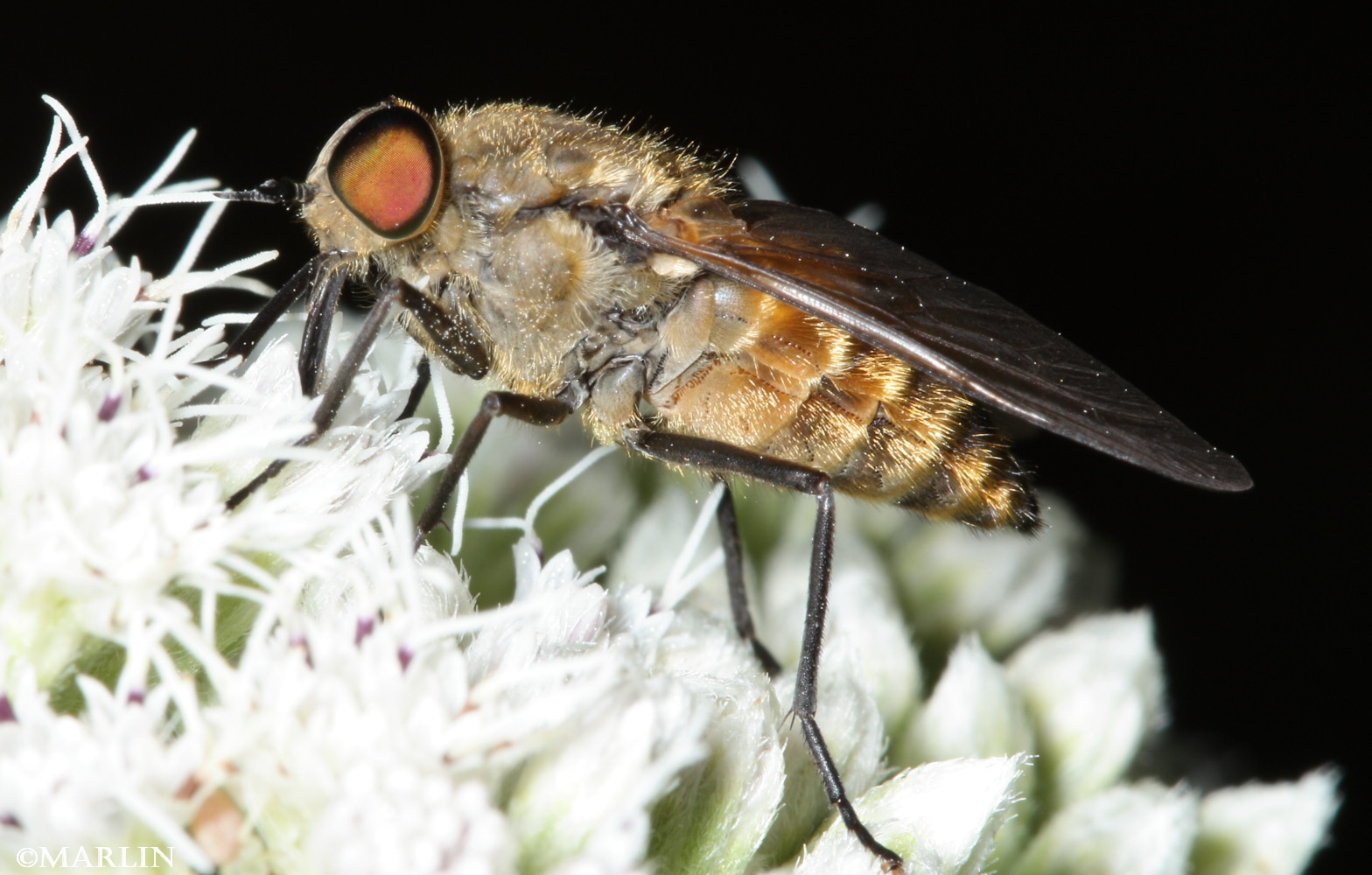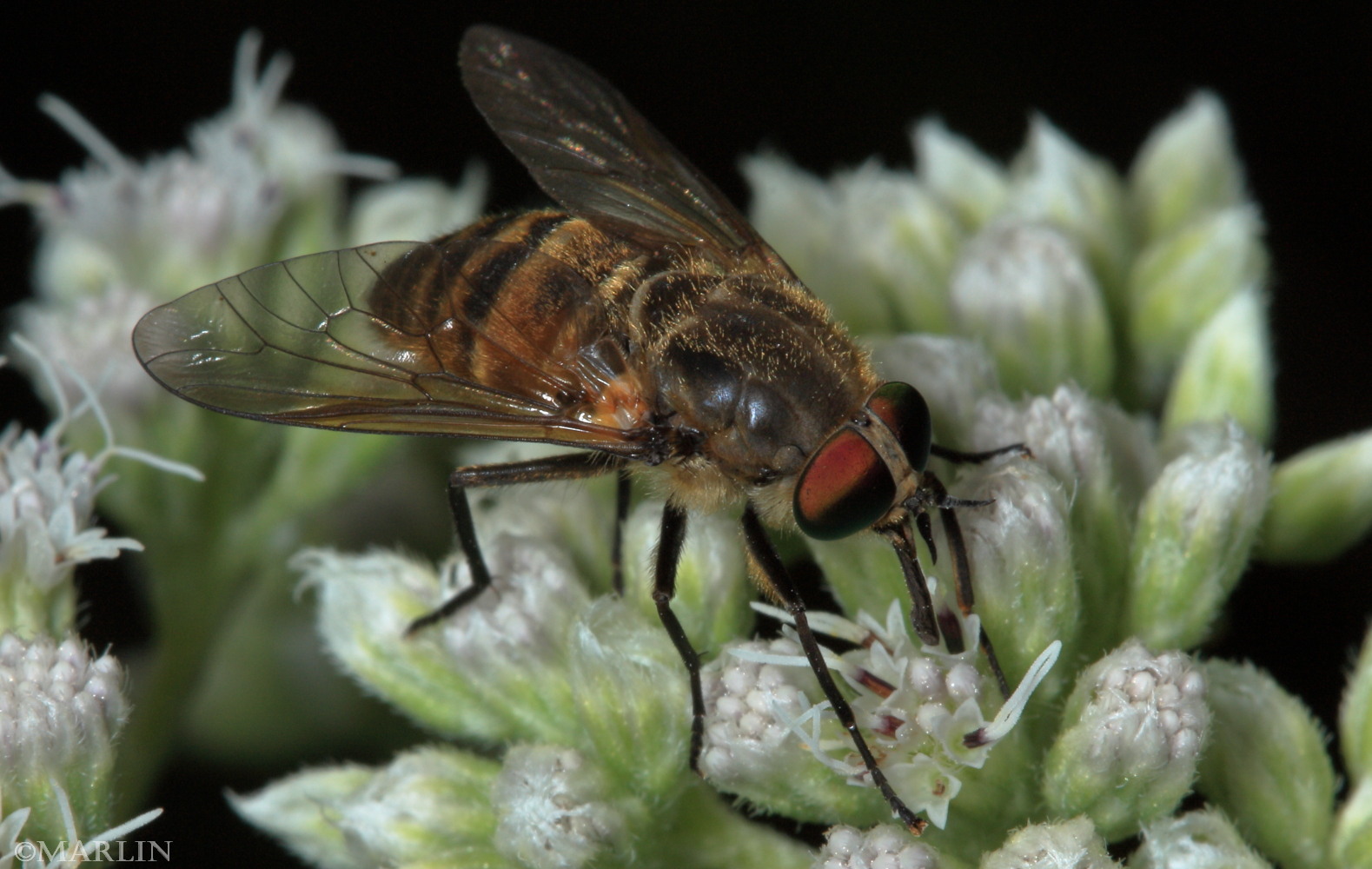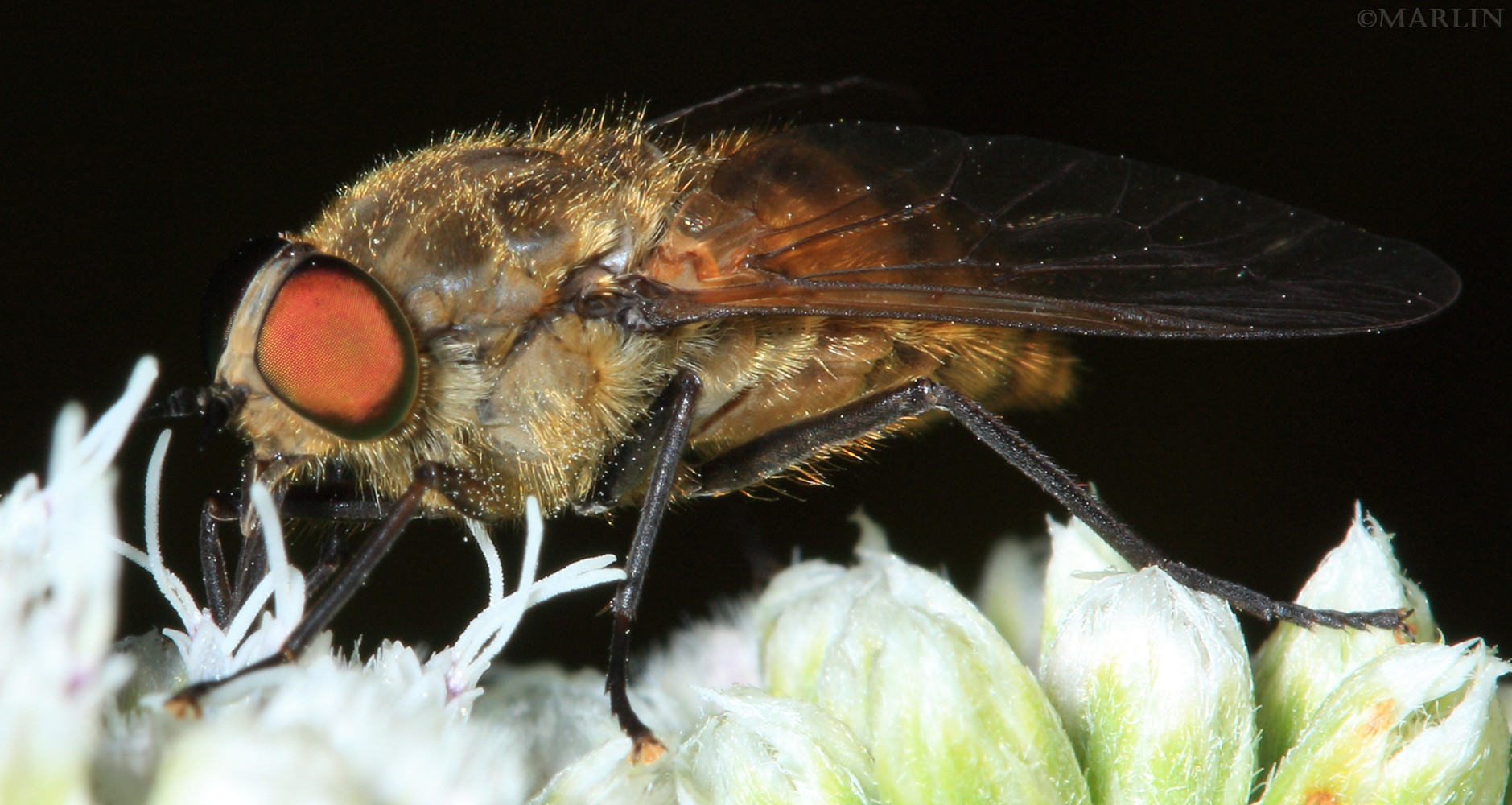Horse Fly – Stonemyia tranquilla

Horse fly fairly dusted with pollen
Family Tabanidae – Horse and Deer Flies
Live adult flies photographed at Allegheny Nat’l Forest, near Marienville, Pennsylvania, USA.
Unlike most other tabanid species, female Stonemyia do not need a blood meal to reproduce. [1]

Adult horse and deer flies are active primarily during warm weather in spring and summer in the north, year-round in Florida and other southern environs. Most species prefer open, grassy habitats near fresh water, where their eggs are deposited on vegetation and the larvae either drop into the water or burrow into mud along the banks [1].
Both male and female adult tabanids feed on flower nectar. As with most insects requiring a blood meal for reproduction, females are the ones responsible for provisioning; they do so by biting mammals, some large, including humans, cattle, deer – and of course, horses. Some species prey on birds, reptiles, or amphibians [2]. Male tabanids are rarely seen and do not bite.

Horse flies (subfamily Tabaninae) are among the world’s largest flies, and inhabit all continents save Antarctica. The females can inflict a painful bite when in search of a blood meal for reproductive purposes. (All adult horse flies feed on nectar and pollen.) Horse flies can be very noisy in flight, but by my experience not more so than some of the large robber flies (Asilidae) or flower flies (Syrphidae).
Flies in the family Tabanidae have three foot pads instead of two, as in most other Diptera
References
- Bugguide.net, Stonemyia tranquilla
- Bugguide. net, “Family Tabanidae – Horse and Deer Flies“
Characteristics of Tabanidae:
- Stout flies with large squamae (scales above the halteres, also called calypters)
- Feet with 3 pads (as opposed to 2)
- 3rd antennal segment elongated, clearly made up of several fused parts
- 3rd antennal segment with a prominent tooth at base in some groups
- Wing veins R4 and R5 fork to form a large ‘Y’ across the wing tip. [1]
Order Diptera. Flies are prevalent in virtually all habitats, with over 16,000 species in North America. Flies can be distinguished from all other insects in that they only have one pair of normal wings. The other pair has evolved into small ball-like structures called halteres. Most flies have compound eyes and mouthparts adapted for piercing, lapping or sucking fluids.
Insects & Spiders | Flies Index | Crane Flies | Flower Flies | Bee Flies | Robber Flies
